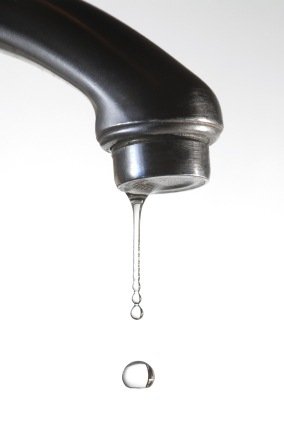Reduce Urine Leakage by 50% With an 8% Weight Loss
A study reported in the January 29, 2009 issue of the New England Journal of Medicine (NEJM) reported overweight women who reduced their body weight by 8% over a 6 month period cut the frequency of their incontinence episodes by at least half, compared to a control group who did not lose a significant amount of weight.
At the outset of the study the women had a minimum of at least 10 incontinence episodes per week. The women averaged 24 episodes of incontinence per week. The women were age 53 on average and had a mean body mass index (BMI) of 36. (Calculate your body mass index-BMI-here)
The Weight Reduction Program
The meal plan consisted of a 1200-1500 calorie/day diet with no more than 30% of the calories from fat. To make simplify the diet some participants used Slimfast supplements for 1-2 meals per day and then ate a regular meal for their third meal. Sample meal plans were given to the women. (Get a meal plan here)
The exercise plan consisted of gradual increase in physical activity, such as brisk walking, to reach a goal of 200 minutes/week (this equates to 30 minutes per day of brisk walking--can be done continuously or in three 10 minute stretches).
The control group was not given a meal plan or exercise plan but still managed to lose1.6% of their body weight over the 6 month study period.
Why overweight causes or worsens incontinence
Simple physics.
Imagine a balloon filled with air. If you place a 15-pound lead anvil on this balloon, chances are, no matter how hard you try to hold the balloon shut, it will either leak air out the stem, or simply burst. On the other hand, if you place a 0-pound "anvil" on the balloon, it is much more likely to retain its air.
The "spare tire" or "tummy" or "flap" that hangs over your belt is called a "pannus" in medical terms. A pannus acts like a lead anvil in relation to your bladder. The weight of the pannus exerts pressure on the bladder and "squeezes" urine out the urethra as if you were squeezing toothpaste out of a tube by exerting pressure on the tube with your hand.
Even the "strongest" of bladder muscles cannot withstand the forces exerted by a large enough pannus.
Pelvic Floor Muscle Training (PFMT)--Kegels
PFMT or Kegel exercises strengthen the muscles around and underneath the bladder. Doing Kegel exercises consistently, 10 sets of 10 per day for at least 6 weeks significantly reduces or eliminates urine leakage, regardless of weight lost. For more information on how to do Kegels, click here.
The Results: PFMT works; PFMT + weight loss doubles the results
Women in the weight-loss group had an average of 7.8 kg (about 15 lbs) weight loss in 6 months; the control group lost an average of 1.6 kg (about 3 lbs). The weight-loss group experienced a 47% reduction in incontinence episodes, compared to the group who did PFMT only, without the 8% weight reduction. Interestingly, with just PFMT, the women in the "non-weight-loss" group still reduced the frequency of their incontinence episodes by 28%.
Even small reductions in weight can improve incontinence: As little as a 5 or 10-pound weight loss reduces the frequency of urine leakage episodes.
For more information on incontinence, see the upcoming posts:
Bladder Surgery For Leakage: A Cure or False Hope? (to be published March 11, 2009)
and
How Wearing a Pessary for Six Weeks Can Reduce Urine Leakage by Restoring the Genital Hiatus (to be published March 12, 2009)
Weight loss to reduce leakage of urine or gas is another example of sustainable health care: Low-cost intervention with "megaphone-like" results.


